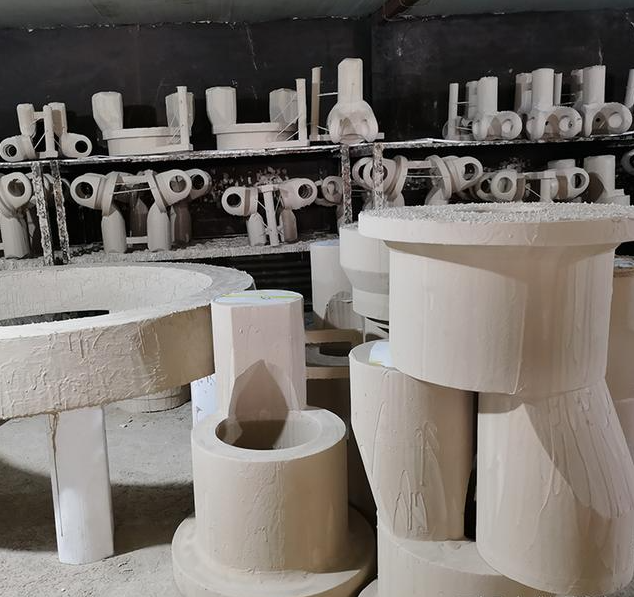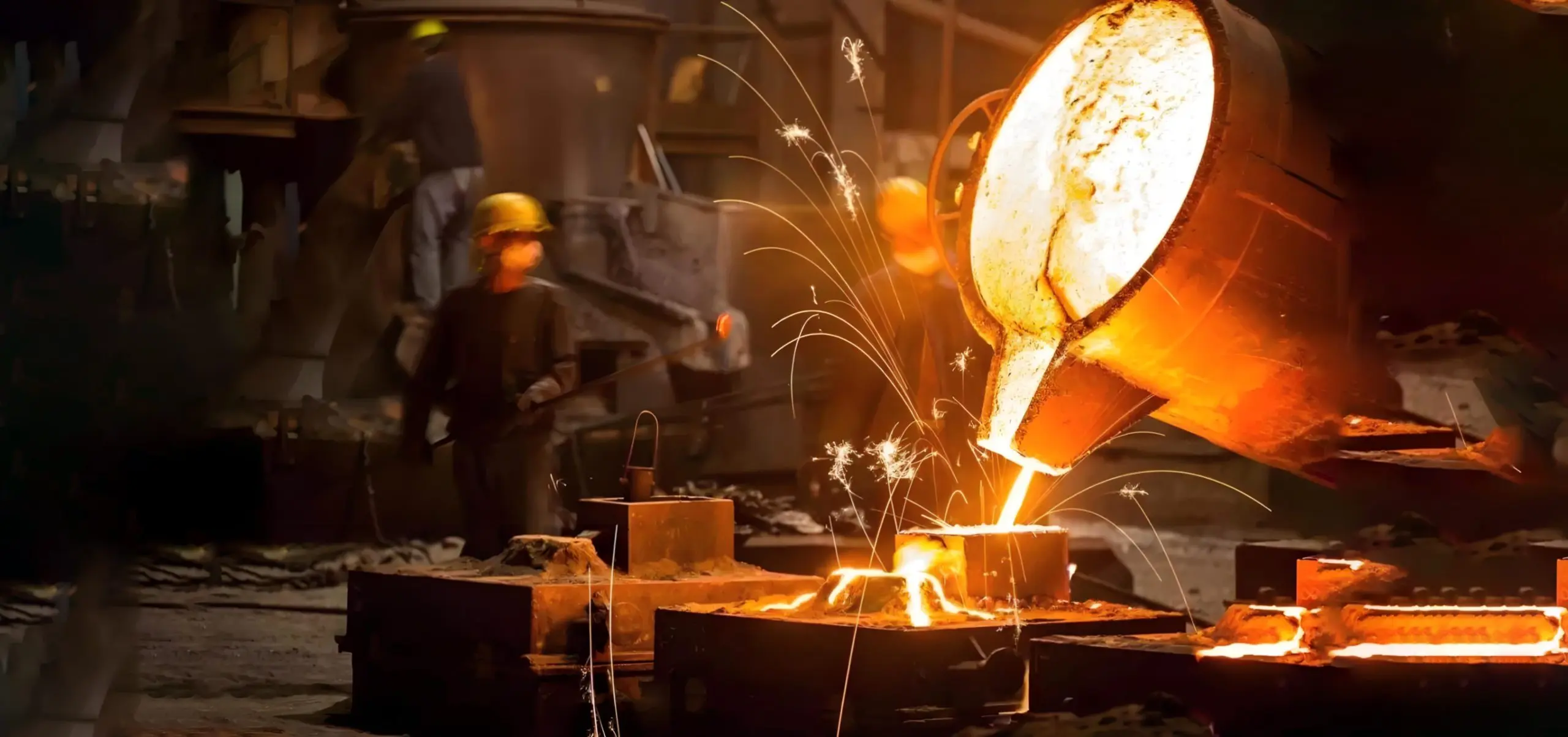Lost foam castings coating composition design
Lost foam castings coating should have excellent properties.
①. Fire resistance: The lost castings coating has enough tolerance at the pouring temperature of molten metal and can maintain sufficient physical properties.
②. Air permeability: EPS vapor can be discharged smoothly from the coating layer under certain negative pressure conditions.
③. Processability: Easy to prepare, good lost foma castings coating and leveling performance.
④. Shelling performance: It can form a shell after high temperature, can burst by itself during cooling, and is easy to clean.
Common lost foam castings coatings are prepared from a variety of raw and auxiliary materials, mainly including seven basic components such as refractory aggregates, binders, suspending agents, wetting agents, defoamers, preservatives and carriers. The basic components of coatings for lost foam casting include refractory materials, carriers, binders, suspending agents, preservatives, surfactants, defoamers, etc.
1. Refractory materials are the skeleton of lost foam castings coatings, ensuring their heat resistance, strength and air permeability, so as to avoid defects such as sand sticking and burrs and obtain a smooth surface. The selection of refractory materials generally depends on the type of pouring metal, pouring temperature, part thickness, and the properties of molding sand. To achieve the best effect, you can choose to mix powders of the same refractory material but with different particle sizes, or mix several different types of powders with different particle shapes. In lost foam casting, how to select refractory fillers for coatings mainly considers the following properties of the fillers: (1) refractoriness; (2) density; (3) thermal expansion coefficient; (4) particle shape and particle size distribution; (5) chemical reactivity with molten metal; (6) gas generation; (7) compatibility with other components in the coating; (8) whether it affects the health of operators and the environment. Commonly used ones include silicon dioxide, alumina, zircon, chromite, aluminum silicate, etc.
1.1 Quartz powder and fused quartz powder
Quartz powder is one of the traditional refractory fillers. It is still used by many manufacturers because of its low price and abundant resources. However, its refractoriness is low and its linear expansion coefficient is large. It is only suitable for casting coatings and small cast steel coatings. The characteristics of fused quartz powder are: low thermal expansion rate, good thermal stability, strong high temperature creep resistance, especially suitable for lost foam castings coatings.
1.2 Bauxite powder
Bauxite has been widely used in ordinary cast steel coatings and cast iron coatings in recent years due to its high refractoriness, good chemical stability, small expansion coefficient, abundant sources and low price.
The chemical composition of bauxite Al2O3+SiO2, sintering temperature and impurity content such as Ti02 and Fe2O3 have a great influence on the coating.
The particle size and distribution of bauxite are important factors affecting the density and permeability of the coating, especially for lost foam coatings. Whether the pyrolysis products of the foam plastic mold during the sintering process can be discharged smoothly through the coating, the permeability of the lost foam coating is a major feature that distinguishes it from other sand casting coatings.
The particle size distribution of bauxite used in lost foam coating is: -270 mesh to -320 mesh 78% -200 mesh to -270 mesh; 15% -100 mesh to -200 mesh; 5% + 100 mesh not more than 2%. The above particle size distribution is also applicable to the grading of other refractory fillers. The particle size distribution of bauxite powder used in sand casting coating is: -270 mesh to 320 mesh, and the concentration rate is 96% + 270 mesh not more than 1%.
1.3 Zircon powder and N-3 powder
Zircon powder is processed from zircon sand. It has a small linear expansion coefficient, good thermal shock stability, high refractoriness and no chemical reaction to most alloys at high temperatures. It is a good refractory filler and is mostly used for stainless steel and high alloy steel castings. Imported zircon powder is mostly ground by air jet mill abroad. The Zr02 content is greater than 65% and the impurity content is low. Domestic zircon powder is mostly ground by Raymond mill, and the impurity content is relatively high. In recent years, the source of zircon powder is relatively complex and the price has been rising. Many coating manufacturers are looking for alternative products to zircon powder to reduce the cost of cast steel coatings.
N-3 powder is synthesized by several natural refractory materials in proportion, and is made by electric melting, crushing and pickling. The refractoriness, linear expansion coefficient and chemical stability are close to zircon powder, and it does not react with alkaline oxides such as Fe2O3, which is beneficial to the anti-sand property of the coating. The price is only 1/3 of zircon powder.
1.4 Magnesia powder and forsterite powder
Magnesia powder and forsterite powder are usually used as the preferred refractory materials for preparing coatings for alkaline steel castings. The main component of magnesia powder is the sintered block obtained by calcining natural magnesite (MgCO3) through crushing, grinding and magnetic separation. The following points are worth paying special attention to:
① The sintered block must be the so-called burnt block calcined at 1500℃-1600℃, with dense and hard particles and MgO content greater than 90%, otherwise the coating is prone to cracking during high-temperature pouring.
② The sintered block contains a high amount of magnetic substances such as iron and iron oxide. If you want to obtain high-quality magnesia powder, magnetic separation is a key step.
③) Magnesia powder is easy to absorb water and become hardened due to moisture, so special attention should be paid to the moisture content in the powder.
The iron oxide content in forsterite powder should be mainly controlled, which should not be greater than 10%. The less serpentine (hydrous magnesium silicate) content, the better, generally not more than 20%, otherwise the refractoriness will decrease, and the loss on ignition and gas generation will increase.
1.5 Brown corundum powder and white corundum powder
Brown corundum is made of bauxite as raw material, and is made by high temperature treatment at 2000℃-2400℃. White corundum is made by electric melting and recrystallization of alumina powder. Its basic mineral is a-Al2O3, the former is greater than 94%, and the latter is greater than 97%. Corundum has high hardness, high melting point, high thermal conductivity, good thermal stability, not easy to crack, good acid and alkali resistance, brown corundum powder is suitable for preparing ordinary cast steel and alloy steel Lost foam castings coating, and white corundum powder is often used as a composite filler for large cast steel coatings because of its high price. It should be noted that the particle size distribution and grade of corundum powder for abrasive and casting coatings are inconsistent. When used, it should be graded according to the particle size composition of the refractory filler for coatings.
1.6 Other refractory fillers
In addition to the several refractory fillers mentioned above, there are also mullite powder, chromite powder, high-aluminum corundum powder, diatomaceous earth powder, talcum powder, mica powder, feldspar powder, etc. According to the functional requirements of the Lost foam castings coating, they can be selected alone or compounded as refractory fillers. In short, refractory fillers are the main part of the coating and play a decisive role in the effect of the coating. When selecting refractory fillers, the mineral composition, purity, impurity content, particle size composition and other indicators of the refractory fillers should be considered.
The carrier of the lost foam coating is to adjust the viscosity of the coating. For the coating used for lost foam casting, it is generally water, rarely alcohol, and other organic solvents that may react chemically with the foam model cannot be used.
The binder binds the components in the coating together and ensures that the coating is bonded to the surface of the foam model when brushing. The binder is mostly one or several organic binders. In addition to ensuring that the coating is bonded to the surface of the foam model before the coating is dried, the binder also provides a certain strength for the coating after the coating is dried and when pouring.
The main function of the suspending agent is to form a colloid with the carrier to suspend the refractory ceramic powder to ensure the fluidity of the coating and prevent the aggregation and precipitation of solid particles.
Preservatives control the growth of bacteria and microorganisms in the coating to prevent the coating from rotting and deteriorating.
Surfactants mainly make solid particles easier to wet during the coating production process and make it easier for the Lost foam castings coating to wet the surface of the foam model when it is used.
Defoamers are used to prevent the production and use of coatings from producing a large amount of foam. Pigments can also be added to the coating for beauty and ease of management. There are many options for various components, but it should be noted that some components will interact with each other, and some components will affect several aspects of the coating at the same time.





